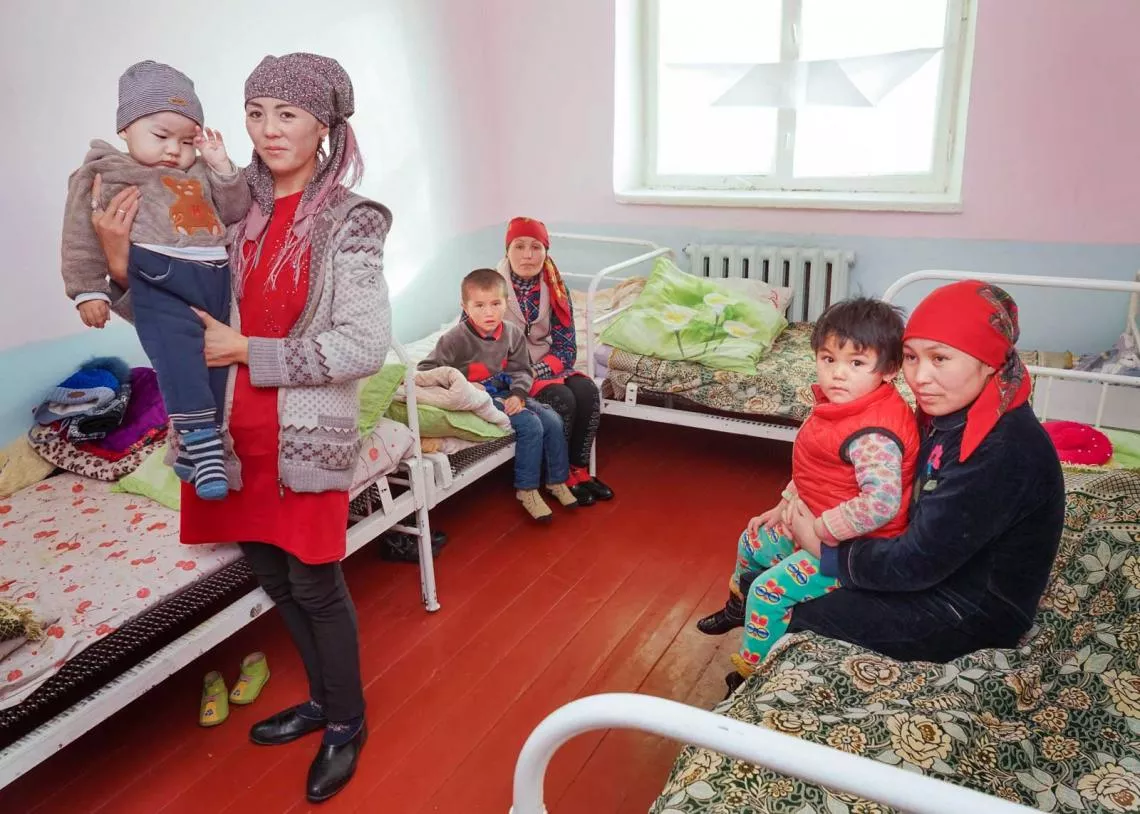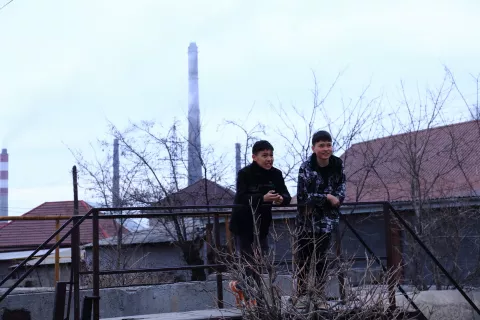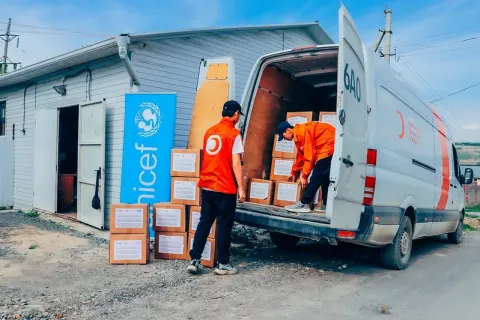In Kyrgyz mountain village hospital, UNICEF helps resuscitators save child lives
Thanks to a UNICEF-supported effort to bring down child mortality in Kyrgyzstan, Dr. Arstanbek Karybekov and his colleagues are now able to save lives they could not before.
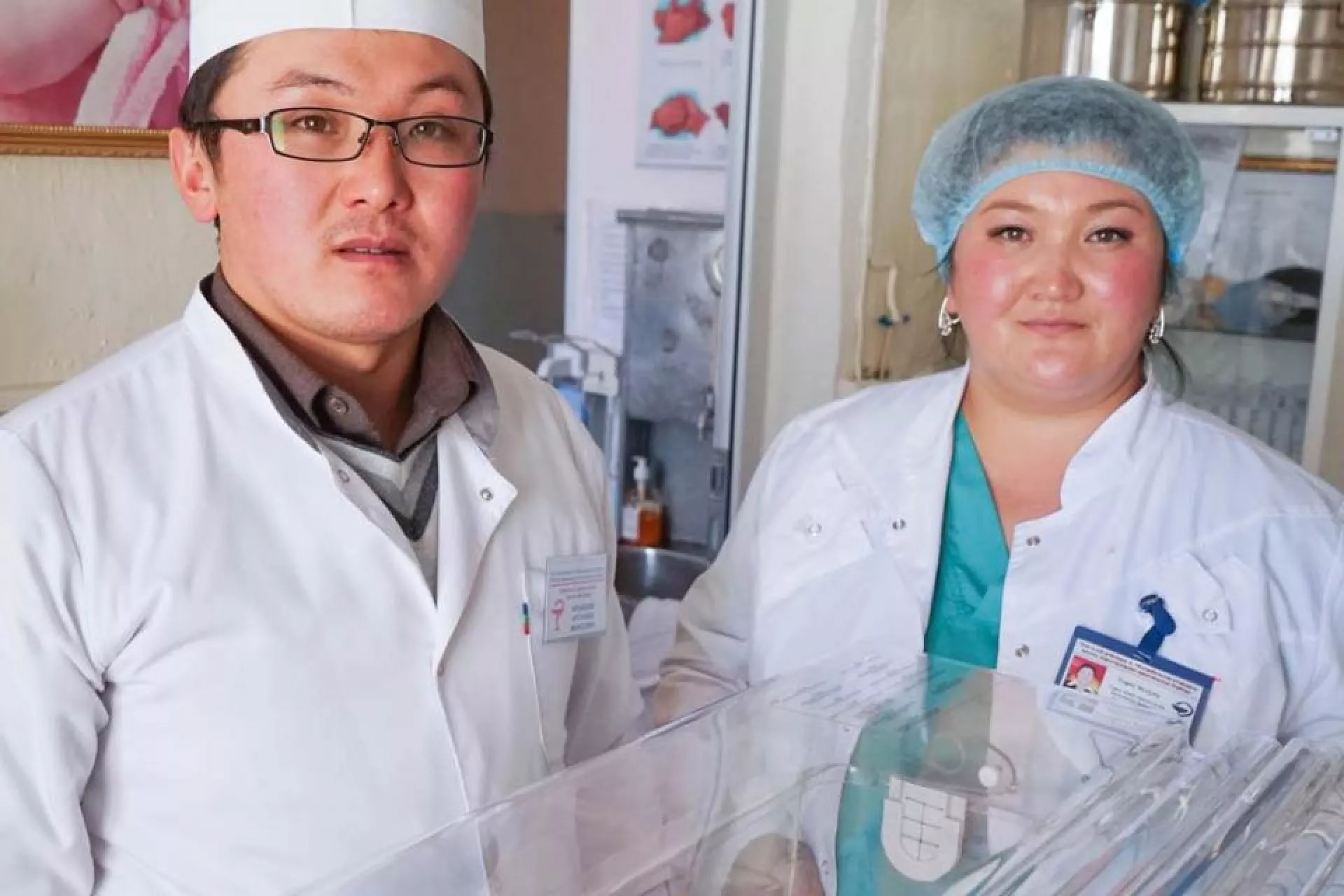
‘We don’t forget these cases’, says Dr. Arstanbek Karybekov. ‘When we save a child’s life, we feel such joy; the child’s family becomes our family.’ Thanks to a UNICEF-supported effort to bring down child mortality in Kyrgyzstan, he and his colleagues are now able to save lives they could not before.
Dr. Karybekov is deputy director of the Chon-Alai Center of General Medical Practices, a primary health care facility serving a district of 25,000 people. It is located in Daroot-Korgon, a remote mountain village in the country’s southern Osh province.
In recent years, the center has benefited from a series of interventions to improve skills, equipment, and organization at hospitals in Kyrgyzstan. One of the key interventions has been training doctors in PALS – paediatric advanced life support. Dr. Karybekov, himself a resuscitation specialist, tells of the changes the trainings have brought:
‘Severe cases were fatal’
‘Previously, all severe cases that came here were fatal. When a child arrived who was not breathing, who did not have a pulse, we could only tell the family that it was over.'
Two rounds of training in child resuscitation in 2015, for six of the center's doctors, turned that situation around:
'Now, even when there is no longer any sign of life, we attempt resuscitation', Dr. Karybekov says.
And the new skills are saving lives regularly:
'In 2016, we had six such very severe cases – and four of the children survived.’
One of the advanced methods the resuscitators have learnt, is to give intra-bone injections, which saves doctors time from trying to find a vein for the needle.
I remember it was mentioned in medical school that this was possible. But until 2015, I had never heard that it had been done by anyone in Kyrgyzstan.
Nationwide action plan
The centre in Chon-Alai district is only one of many in Kyrgyzstan that have benefited from the elaborate effort to bring down child mortality, which has been funded by the Government of Japan. Nationwide, more than 1,000 doctors, midwives and nurses have been trained on newborn child resuscitation and care over the last four years – in accordance with a joint Ministry of Health - UNICEF action plan, with the support of UNICEF.
To guide interventions at critical junctures, UNICEF with the Ministry of Health has also formulated national standards for child resuscitation for four of the most common medical conditions. Standards ensure that in case of emergency doctors provide the best response as efficiently as possible. Furthermore, hospitals benefit from a standard for referrals, instructing on how and when to refer a sick child, or a delivery where complications are expected.
Daroot-Korgon is located 350 km from Osh city. On the way, there are three mountain passes, the highest at 3600 altitude. Especially during winter, the village is hard to reach, with roads in poor condition and avalanches a frequent threat.
Hospitals are also much better equipped to save children’s lives: for example, UNICEF has provided special monitors for tracking every minute of a child’s activity, and infusion pumps that allow physicians to introduce exact medication dosages. Nationwide, 34 hospitals nationwide have received CPAP machines, which provide gentle breathing support for babies.
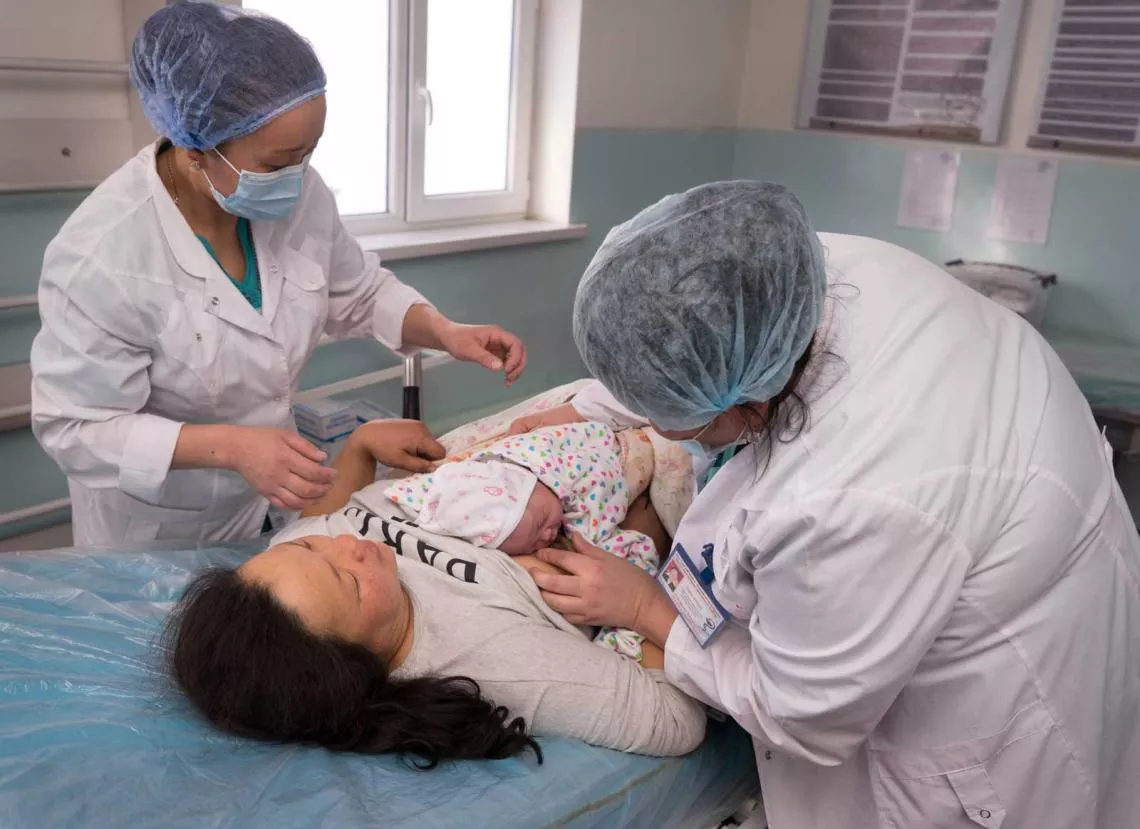
Saving newborns
Improving conditions in maternity wards has been particularly important for saving lives of both newborns and their mothers.
In 2009, when Dr. Karybekov joined this hospital, 14 newborns died in the maternity ward, where 400-500 babies are delivered annually. “Most of the cases were due to mistakes; a lack of skills and knowledge on part of the health workers,” he says.
In 2016, the number of newborn deaths had fallen to just two.
I have attended many UNICEF-organized trainings since then. Our staff have been trained in first aid during birth, we've learnt of the importance of breastfeeding, and of the temperature chain – keeping babies warm and with the mother after birth.
And she adds: “We also have fewer deliveries with complications, because we have been trained to identify which cases to refer. We never had such a protocol system before,” she says.
Sub-zero bathroom
In 2011, UNICEF rehabilitated the water and sewage system at the ward, providing it with clean water supply, inside toilets, and a shower room for mothers and children. Before that, women who had just given birth had to use an outdoor bathroom. The night we spent in Daroot-Korgon, the temperature falls below -30C – a reminder of the unforgiving conditions they had to face.
Dr. Pakirova also praises the follow-up monitoring missions that are part of the UNICEF trainings, to ensure new skills and equipment are put to use:
“It's very motivating for us, because the monitors see the situation from our perspective; identifying needs and making recommendations,” she says.
“UNICEF brings change to our hospital.”
